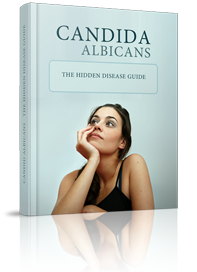Pau d'Arco
Using Pau d'Arco has strong anti-microbial properties that will help get your Candida albicans infection under control.
The scientific name of Pau dArco is Handroanthus impetiginosa and it has many active ingredients including lapachol and beta-lapachone.
The U.S. Department of Agriculture has documented lapachol as being anti-inflammatory, antiseptic, anti-tumorous, anti-viral, bactericidal, fungicidal, and virucidal, among others.
Beta-lapachone has demonstrated in laboratory studies to be anti-microbial, anti-fungal, anti-viral, anti-tumorous, anti-leukemic, anti-cancerous and anti-inflammatory with few side-effects.
Pau d'Arco is a huge canopy tree native to the Amazon rain forest and other tropical parts of South and Latin America.
It grows to 125 feet high and the base of the tree can be 6-9 feet in diameter. It is a flowering tree that is prized for it's beauty and high quality wood.
Pau d Arco goes by many different names - in English it's the "Pink Trumpet Tree", the Indians call it "Taheebo", the Portuguese "Ipe Roxo" or "Ipê Roxo", and the Spanish "Quebracho", "Lapacho" or "Tabebuia".
It has a long and well-documented history of use by the indigenous peoples of the rain forest. Its use may actually predate the Incas.
Pau d'Arco also has a long history in herbal medicine around the world. It is used in the Amazon for a variety of ailments from the common cold to fungal infections to cancer.
In South America, it is used to treat everything from constipation to Candida and yeast infections to diabetes.
In Brazilian herbal medicine it is used to treat ailments from ulcers to Candida to leukemia.
In North American herbal medicine, it is used on everything from urinary tract infections to gastrointestinal problems of all kinds and is a popular natural remedy for Candida and yeast infections. It is also popular in Europe.
The Pau dArco tree is one of very few types of vegetation that does not permit the growth of fungus.
Most other plants become covered with spores which lead to fungal growth when exposed to water and weather. This doesn't occur with Pau dArco because it has an uncommon resistance.
Medical Properties of Pau d'Arco
The anti-microbial properties of many of Pau d Arco's active phytochemicals were demonstrated in several clinical studies.
In these studies they exhibited strong activity against bacteria, fungi, and yeast (including Candida, Aspergillus, Staphylococcus, Streptococcus, Helicobacter pylori, Brucella, tuberculosis, pneumonia, and dysentery).
You need to be careful in selecting a brand. Some products have a lack of quality control and confusion as to which part of the plant to use and how to prepare it.
In 1987, a chemical analysis of 12 commercially available Pau dArco products revealed only one product containing lapachol and only in trace amounts. Good quality Pau d'Arco contains an average of 4% lapachol.
Use Pau d Arco as part of the Six Steps to Health. It is a safe antifungal that will help kill the Candida so you can regain your health.
Dosage
- Decoction - 1 cup 2-8 times daily.
A decoction is made by boiling 1/2 ounce of bark (4% lapachol) in 2 cups of water for 10-15 min. - Capsule – two 500 mg capsules 2-3 times daily.
-
Fluid Extract (inner bark) - 1-2 ml 3 times daily.
- Tincture - 20 to 30 drops - 2-3 times daily.
A tincture is made by soaking the bark in alcohol.
Cost
$10 to $50 per month, depending on brand and type
Recommended Brands
- Pau d'Arco Capsules from Nature's Way
$5.79 for 180-505 mg capsules ($0.19 per day) - Pau d Arco Capsules from Mountain Rose Herbs
$8.25 for 100-400 mg capsules ($0.66 per day) - Pau dArco Extract from Nature's Answer
$5.59 for 1 ounces ($1.13 per day) - Pau D Arco Extract from Mountain Rose Herbs
$28.00 for 4 ounces ($1.40 per day) - Pau d Arco Bark from Mountain Rose Herbs
$5.00 for 1 pound ($0.33 per day)
Contraindications and Adverse Effects
There have been no reports of human toxicity when a whole-bark decoction or tincture of Pau d Arco is used.
Lapachol has been shown to induce abortions in animal studies so Pau dArco should not be used by pregnant women.
Single large doses may cause stomach upset and/or diarrhea. It is recommended that high doses of Pau dArco be avoided.
Pau d'Arco should be discontinued before surgery because of the danger of excessive bleeding. Administering vitamin K will stop the bleeding. The fact that Pau d'Arco causes vitamin K-reversible bleeding strongly suggests that it would interact with anti-coagulants such as Coumadin to increase the danger of hemorrhage.
The oral LD50 dosage (the amount that is lethal to 50% of the animals exposed to it)for lapachol is reported to be 1.2–2.4 g/kg in rats and 487–621 mg/kg in mice. That would be a 827,900 mg dose of high quality Pau d'Arco for a 150 pound person.
Many Candida sufferers will experience the Herxheimers Reaction due to large amounts of Candida dying and releasing their toxins all at once. This is a detoxification reaction and not a counteraction to the product.
Cut back on the dosage or stop taking it if any of these symptoms occur - greater fatigue, diarrhea, headaches, muscle/joint aches or flu-like symptoms. Once your body eliminates the toxins, you can resume the normal dosage.
If you get a slight headache from the detoxification, any common pain reliever seems to work to curb the discomfort.
References
Home > Treatment > Natural Candida Cure > Pau d'Arco







New! Comments
Have your say about what you just read! Leave me a comment in the box below.